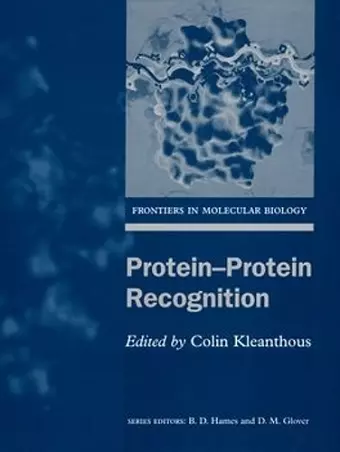Protein-protein Recognition
Format:Paperback
Publisher:Oxford University Press
Currently unavailable, and unfortunately no date known when it will be back

The purpose of Protein-Protein Recognition is to bring together concepts and systems pertaining to protein-protein interactions in a single unifying volume. In the light of the information from the genome sequencing projects and the increase in structural information it is an opportune time to try to make generalizations about how and why proteins form complexes with each other. The emphasis of the book is on heteromeric complexes (complexes in which each of the components can exist in an unbound state) and will use well-studied model systems to explain the processes of forming complexes. After an introductory section on the kinetics, thermodynamics, analysis, and classification of protein-protein interactions, weak, intermediate, and high affinity complexes are dealt with in turn. Weak affinity complexes are represented by electron transfer proteins and integrin complexes. Anti-lysozyme antibodies, the MHC proteins and their interactions with T-cell receptors, and the protein interactions of eukaryotic signal transduction are the systems used to explain complexes with intermediate affinities. Finally, tight binding complexes are represented by the interaction of protein inhibitors with serine proteases and by nuclease inhibitor complexes. Throughout the chapters common themes are the technologies which have had the greatest impact, how specificity is determined, how complexes are stabilized, and medical and industrial applications.
... an excellent and timely book ... one that will prove helpful to many a protein biochemist ... Protein Protein Recognition will serve as an exceptional sourcebook for its subject for some time to come. * Cell *
ISBN: 9780199637607
Dimensions: 246mm x 189mm x 19mm
Weight: 755g
342 pages